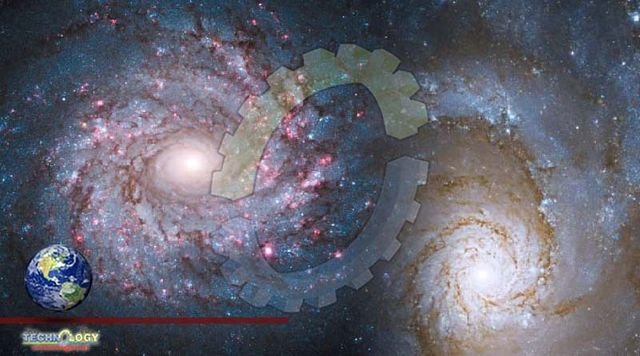NASA’s Hubble Space Telescope Captures Magnificent features the Grand Design Spiral, NGC 3631, located approximately 53 million light-years away in the direction of the constellation Ursa Major. The “arms” of grand design spirals appear to wind around and into the galaxy’s nucleus.

In contrast to multi-arm and flocculent spirals, which have softer structural elements, a grand design spiral galaxy has obvious and well-defined spiral arms. A grand design galaxy’s spiral arms stretch clearly across the galaxy through many radians and may be seen over a considerable proportion of the galaxy’s radius.
Several astronomers believe that the Whirlpool’s curved arms are specifically prominent due to the effects of close interaction with NGC 5195, which is a small, yellowish galaxy located at the outermost tip of one of the M51’s arms.
This compact galaxy looks like it is tugging on the arm. In turn, the tidal forces collide to activate the formation of new stars. Hubble Telescope’s provides a clear view of the galaxy showing that NGC 5195 is trailing behind M51. It is worth noting that this small galaxy has also been gliding Magnificent Grand Spiral past the Whirlpool for hundreds of millions of years, according to NASA’s statement. This Hubble’s beautiful image of the M51 displays the red as the infrared light and also the hydrogen found within large star-forming regions. While the blue hues represent the hot and newly-born stars, and the yellow colors are attributed to the older stars.
Close inspection of NGC 3631’s grand spiral arms reveals dark dust lanes and bright star-forming regions along the inner part of the spiral arms. Star formation in spirals is similar to a traffic jam on the interstate. Like cars on the highway, slower-moving matter in the spiral’s disk creates a bottleneck, concentrating star-forming gas and dust along the inner part of their spiral arms. This traffic jam of matter can get so dense that it gravitationally collapses, creating new stars (seen here seen in bright blue-white). The image uses data collected from Hubble’s Wide Field Camera 3 and Advanced Camera for Surveys. The color blue represents visible wavelengths of blue light, and the color orange represents infrared light.
Source: This news is originally published by scitechdaily